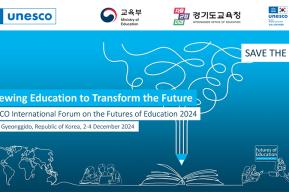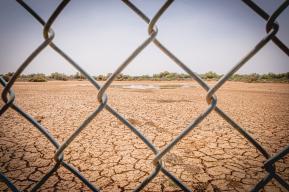By Andreas Schleicher, OECD Director of Education and Skills
In recent decades, the world has experienced a drastic increase in extreme temperature events. Between 1980 and 1999, there were an average of seven per year. This more than tripled during the first two decades of this century. Children born in 2020 might face twice as many wildfires and almost seven times more heatwaves in their lifetime than those born in the 1960s. However, if we can limit global warming to 1.5°C above pre-industrial levels, these children could see a 45% decrease in heatwaves and a 10% drop in wildfires.
The impact of climate extremes on learning
Extreme weather not only poses immediate threats but also disrupts educational processes. Factors like poor air quality from pollution and wildfires can lead to health issues, driving up school absences. Moreover, extreme weather can damage school infrastructure or even force schools to shut down due to unbearable heat or polluted air. The recent COVID-19 pandemic has shown that unplanned school closures can significantly delay students’ academic growth.
Extreme weather can indirectly affect students’ learning capabilities. For instance, the OECD’s 2023 Skills Outlook reveals that if students face ten additional school days with temperatures above 26.7°C in the years leading up to a test, their performance suffers. Furthermore, taking high-stakes tests in high pollution conditions can result in lower results. Skills that require intensive cognitive processing, analytical problem-solving, and are dependent on working memory such as maths, are especially vulnerable.
Adapting educational systems to the changing climate
The education sector must adapt. Short-term solutions include enhancing air filtration systems, ensuring students are shielded from pollutants during extensive wildfire seasons, and reducing the likelihood of school closures. While air conditioning can help manage classroom temperatures, its use may worsen climate change.
Efficient ventilation systems are a preferable alternative. For high-risk areas, proactive planning is essential, allowing for a quick switch to remote learning during extreme events or if schools sustain damage. As evidenced during the pandemic, while sudden school closures affected learning, high-quality remote instruction minimised disruptions. Long-term, we should priorities making educational infrastructure more energy-efficient and resilient against extreme heat.

The climate crisis and socio-economic disparities
Socio-economically disadvantaged youths often face compounded challenges. They’re more likely to reside in regions with poor air quality, attend schools with subpar infrastructures, and lack access to mitigation technologies at home.
Such disparities not only magnify the gap in learning experiences but also in exam conditions. Even minor differences in performance, exacerbated by adverse environmental conditions, can lead to significant consequences during high-stakes exams. These exams typically occur in early summer, a time when extreme weather events are becoming more frequent. The limited access to mitigation measures for these disadvantaged youths can severely impact their performance, leading to long-term socio-economic inequalities and perpetuating a cycle of limited access.
Empowering youth to become sustainability champions
Beyond adapting to the environmental changes, schools have a pivotal role in driving the green transition. They can do this by equipping young people with not only the scientific knowledge but also the mindset and motivation to combat environmental degradation.
Environmental sustainability competence encompasses the necessary knowledge, skills, attitudes, and values vital for promoting a sustainable environment. This includes a solid grounding in science, an understanding of climate change, a commitment to the environment, the confidence to explain environmental phenomena and the drive to act sustainably.
However, the 2023 OECD Skills Outlook reveals that across OECD countries only one in three 15-year-olds possesses both the emotional and behavioral aspects of this competence, while also achieving foundational science scores in the PISA test. The disparity is even more pronounced socio-economically: while nearly 40% of advantaged youths are competent in environmental sustainability, a mere 10% of their disadvantaged counterparts achieve the same.
Schools are instrumental in shaping how deeply students grasp environmental sustainability competence. They can nurture a genuine interest in environmental issues and equip students with the skills to act responsibly today and further the green transition in the future. It’s essential to foster this competence in all youths, as it’s crucial for both the labor market and the societal changes we need to combat the climate crisis.












